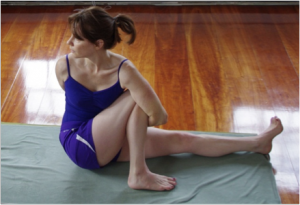This guest post is by Maria Walters of Rejournaling Me.
It was August or September, 1999, when I finally realized that then next year was going to be The Year Two Thousand. Being twelve, I loved being involved in anything that I felt like was “making history,” and my anticipation for the New Year rose with the media hype.
At that time I was also avidly collecting novels in the Dear America series, which told the stories of girls growing up at different points in American history. If you couldn’t tell by the name, the novels were in diary form—but they were fiction, a fact that seemed unfortunate in my eyes.
So, on the precipice of what I knew was going to be a new, amazing time in history, I decided that the journal of a real, live, almost-teenage girl would be absolutely fascinating to historians and readers everywhere. And thus, my new year’s resolution was born: to journal every night, to create something that would last for millennia to come.
Yes, a little melodramatic, perhaps, but isn’t that how all dreams seem when you’re twelve? Maybe that’s been a secret of my success: more than eleven years later, I still roll over in bed right before I turn off my light and hand-write a page or two about my day.
Why I journal
Though I started journaling through a naive desire to be famous and make history, I’ve grown to appreciate it much more than that. My journals are my reference books for my life—I can remind myself how much I’ve grown, how far I’ve come, or just how my handwriting has changed by simply flipping through the pages.
My journal is somewhere where I can think out loud and say things without worrying who is reading or how ridiculous my dreams are. I can rant, be frustrated, and think through issues without picking a fight with anyone. And, most of all, I can review my day, even in its dullness, and reflect on what has been good or bad.
Looking back, my journal won’t be the most interesting read for most people—I include plenty of monotonous details about the schedule of my day without being able to encapsulate the funny moments, the tears shed, or the characters of people around me who make life worth living. But I treasure the ability to look back on “normal” days in my life that are completely different than today’s “normal” day.
Start your own journal
The combination of foreignness and familiarity is probably the reason people are often fascinated by the fact that I journal. Often, they mention wishing they had the same habit, or asking how I’ve kept going. Well, there are certainly things (like my spelling!) that I could have improved back in 1999, but here are a couple of things I think helped me keep writing.
Take a head start
I actually started journaling on December 21, 1999, ten days before Y2K. I could be a pretty cautious girl who didn’t like failure, so I decided to test out my new year’s resolution before deciding to make it. That way, if I decided it wasn’t working or wasn’t worth it, I could just not make the resolution, instead of failing right out of the gate. Playing with logic in that way still works for me—I will often start a practice before deciding to commit to it long-term.
Use something beautiful
I remember the process of elimination at the bookstore when I was looking for my new journal—weighing one book in my hand, then another, scrutinizing each carefully. And then I felt it—a slim book, with a satiny smooth, lightly padded cover, covered with an image of a Monet or other impressionistic painting. Since then, I’ve picked out at least three or four journals each year—and I still look for one that looks beautiful and feels right.
Do it every day
I took my journal on two or three sleepovers within the first month of starting it. I’ve written in the light of a flashlight, a closet, in the hallway or bathroom, surrounded by people or alone. I even remember staying up later than I was supposed to, lying on my bedroom floor and writing by the hall light coming in under the door. It was only five or ten minutes, but I found a time for it, every day.
And, yes, I have missed a day or two at a time, but I don’t think about my habit as being “writing almost every day,” because suddenly every day becomes the “almost” part instead of the “every day” part. Writing every day makes me look for ways past the excuses instead of looking for the excuses not to write.
Expect to be boring
As I mentioned before, the way I journal helps me to think back through the day, writing down what I did, who I was with, and sometimes it reads more like a calendar than a novel. Some days I have plenty of emotions to spill or thoughts to think, and I can go on for pages. But when I write, I don’t worry about what I’m going to say, having the perfect phrasing, or any other performance anxiety—I just write something down and know that whether it’s fascinating or boring, I’ll write again tomorrow.
I may not be as famous as 12-year-old me might have hoped, but I have lived through a new, amazing time in history. Now I have a chance to look back and acknowledge it, and I have plenty more new, amazing times to look forward to documenting—which is my hope for you, too, that you have a chance to reflect on what was good and hard, and look forward to it.
What about you? Do you keep a journal? Or do you have some other way to process what happens each day?
Maria shares her old journal entries, 11 years later, at her blog, Rejournaling Me.







Recent Comments